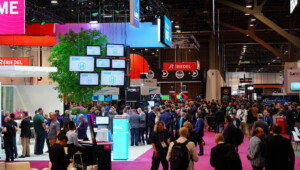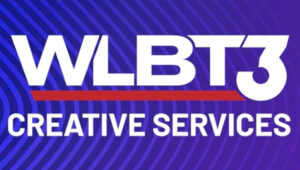The category hits an all-time high of $12.4 billion during the third quarter, balancing out slowdowns for traditional media including TV and radio. Digital is up 17% over the 2013 period.
A new forecast from Forrester Research says ad dollars will hit $77.01 billion that year and balloon to $103.4 billion by 2019, leaving television well behind despite its continued growth. Other recent forecasts have predicted online will overtake digital, but they put that date further away.
Mobile Will Push Digital Ads Past TV By 2019
The “when” depends on which research you adhere to, but by nearly all accounts, digital advertising is going to overtake TV in the next five years. Forrester Research today prognosticated that interactive spending will achieve a 12% compound annual growth rate and total $103 billion by 2019. Compared to digital, television will grow at a slower rate and rise to $85.8 billion during the same time, Forrester said.
Insurance giant Allstate Corp. will shift 10% of its TV dollars to online video buy 2105, said Lisa Cochrane, Allstate’s SVP of marketing. “We are following people’s media consumption.”
Digital Ad Rev To Top TV In U.S. By 2017
In a “POV” piece written this week by top Magna forecaster Vincent Letang, he writes that digital will outgrow TV a year earlier in the U.S. than the firm initially thought — “mostly because Magna downgraded the long-term television advertising projection based on poor performance of television this year in terms of viewing and ad sales.”
The time most people spend with traditional media is plummeting, while they’re spending more and more time with new media. One exception to that is out of home advertising. Despite the rise of digital media, time spent with out of home media is actually holding up quite well. It’s seeing slight gains, compared to steep declines seen by other traditional media, such as TV and radio.
Digital Shift Changing The Media Economy
 The second-quarter ad revenue numbers from Kantar Media reflected a pullback in ad spending from first quarter, when many advertisers dropped money on the Olympics. They reigned in spending during second quarter to make up for those big outlays. Such volatile changes could become the norm for the media economy in the long term as advertisers increasingly move their money to digital. Jon Swallen, chief research officer at Kantar Media talks about the current health of the ad economy.
The second-quarter ad revenue numbers from Kantar Media reflected a pullback in ad spending from first quarter, when many advertisers dropped money on the Olympics. They reigned in spending during second quarter to make up for those big outlays. Such volatile changes could become the norm for the media economy in the long term as advertisers increasingly move their money to digital. Jon Swallen, chief research officer at Kantar Media talks about the current health of the ad economy.
Midterm elections are less than three months away, but there’s already a clear winner in 2014: digital advertising. A leading ad research firm recently estimated that more than $270 million will be spent across the country this cycle on digital campaign efforts — an 1,825% increase from 2010, when the first generation of tablet computers was just hitting the market.
Local Media Missing Digital Ad Opportunities
Most local TV, radio and newspaper outlets are leaving money on the table by not focusing on digital media when selling advertising to local businesses. That’s one of the finding in a new joint research study conducted by MFM – the Media Financial Management Association and Borrell Associates.
Acura is launching its new luxury sedan — embarking on the biggest marketing campaign in its history — without the help of broadcast prime time TV. The American Honda division will promote the TLX with a robust campaign that includes a significant investment in digital video.
Local TV broadcasters have shifted into high gear with digital advertising efforts, driving an estimated all-time high of nearly $3 billion in new ad revenue for stations this year, according to new research commissioned by the Television Bureau of Advertising. The Borrell study encompassed 815 stations and reports that broadcasters grew their digital revenue 15% last year.
Why Politicians Continue To Avoid Digital Ads
Just 3.3% of political ad spending will go to online this year. The problem: Too many old fogies running the campaigns. Kip Cassino, executive vice president at Borrell Associates, talks about why politicians lag behind on the digital front, how that could change in by 2016 and what the role of cable is in political ad spending.
Digital Isn’t A Question, It’s Where, How Much
Pulpo is a Hispanic-focused digital advertising services provider based in Berkeley, Calif., with offices in Spain, Mexico and Argentina.
 The television station group is paying $20 million to acquire the digital services provider. Its products include websites, a digital publishing platform, original and syndicated content, as well as one of the largest digital advertising agencies.
The television station group is paying $20 million to acquire the digital services provider. Its products include websites, a digital publishing platform, original and syndicated content, as well as one of the largest digital advertising agencies.
It will happen sooner than you might think, in 2018, predicts a new report. Credit the shift in budgets from print to online and gangbusters growth for mobile ads.
Variety Of Options Drive Sales At Star Trib
 The Minneapolis Star Tribune, on the strength of its product portfolio, has found success with digital sales, which now generates about 20% of the paper’s revenue. Its efforts offer lessons for newspapers and broadcasters alike. This is Part IV of a four-part series. Part I on what TV stations are doing to integrate digital ad selling into their sales processes appeared Tuesday; Part II on the automated buying of spot appeared on Wednesday; and Part III on improving digital sales operations appeared on Thursday.
The Minneapolis Star Tribune, on the strength of its product portfolio, has found success with digital sales, which now generates about 20% of the paper’s revenue. Its efforts offer lessons for newspapers and broadcasters alike. This is Part IV of a four-part series. Part I on what TV stations are doing to integrate digital ad selling into their sales processes appeared Tuesday; Part II on the automated buying of spot appeared on Wednesday; and Part III on improving digital sales operations appeared on Thursday.
Automated Spot Buying Looming On Horizon
 Automated, or programmatic, systems allow agencies to purchase advertising directly online, either eliminating sales people or limiting their role. In some instances, the systems involve an auction with buyers bidding for time. Such systems are commonplace in digital media, but they had far less success in the broadcast spot market. Now, however, some station groups are seeing the possibilities. This is Part II of a four-part series. Part I on what TV stations are doing to integrate digital ad selling into their sales processes appeared Tuesday; Part III, on Thursday, will focus on improving digital sales operations; and Part IV, on Friday, will offer a case study of a successful digital sales effort and the lessons it offers for broadcasters and newspapers alike.
Automated, or programmatic, systems allow agencies to purchase advertising directly online, either eliminating sales people or limiting their role. In some instances, the systems involve an auction with buyers bidding for time. Such systems are commonplace in digital media, but they had far less success in the broadcast spot market. Now, however, some station groups are seeing the possibilities. This is Part II of a four-part series. Part I on what TV stations are doing to integrate digital ad selling into their sales processes appeared Tuesday; Part III, on Thursday, will focus on improving digital sales operations; and Part IV, on Friday, will offer a case study of a successful digital sales effort and the lessons it offers for broadcasters and newspapers alike.
Digital A Vital Part Of Station Sales Arsenals
 The rise of mobile viewing platforms means TV stations have new tools to offer advertisers who want to reach viewers no matter where they are. And it means stations can offer a greater variety of options — and price points — to potential advertisers, many of whom don’t buy time on traditional TV. This is Part I of a four-part series. Part II on the automated buying of spot will appear tomorrow; Part III on Thursday will focus on improving digital sales operations; and Part IV on Friday will offer a case study of a successful digital sales effort and the lessons it offers for broadcasters and newspapers alike.
The rise of mobile viewing platforms means TV stations have new tools to offer advertisers who want to reach viewers no matter where they are. And it means stations can offer a greater variety of options — and price points — to potential advertisers, many of whom don’t buy time on traditional TV. This is Part I of a four-part series. Part II on the automated buying of spot will appear tomorrow; Part III on Thursday will focus on improving digital sales operations; and Part IV on Friday will offer a case study of a successful digital sales effort and the lessons it offers for broadcasters and newspapers alike.
Why TV Ad Spend Growth Will Top Digital’s
TV ad spend in the U.S. will grow more each year for the next five years than digital video ads will. Here are six reasons why.
Put Local Digital Back In Local Hands
 Local media companies need to decentralize their digital ad efforts and put the control and technology in the hands of their local people, rather than rely on the “Industrial Age” practice of centralization, says Terry Heaton. “Centralized command-and-control groups amount to third-party ad networks, and what’s good for the network isn’t necessarily good for the local property. It doesn’t matter if such a structure is considered ‘best practices’ within the industry; it’s headed down a very long highway to inadequacy,” he says.
Local media companies need to decentralize their digital ad efforts and put the control and technology in the hands of their local people, rather than rely on the “Industrial Age” practice of centralization, says Terry Heaton. “Centralized command-and-control groups amount to third-party ad networks, and what’s good for the network isn’t necessarily good for the local property. It doesn’t matter if such a structure is considered ‘best practices’ within the industry; it’s headed down a very long highway to inadequacy,” he says.
Digital Grabs 56% Of Real Estate Ad Market
Real estate advertising is experiencing a comback and digital media are the biggest winners, according to a new report from Borrell Associates. The firm estimates that real estate advertising will hit $27.3 billion in 2013, with digital taking the biggest role in real estate, garnering 56% of spending.
Real-Time Ad Growth Topping Expectations
 Real time, automated digital ad buying is growing so fast, even the forecasts can’t keep up. Revising its forecast up from earlier this year, eMarketer released a new report predicting advertisers would spend more on real-time bidded (RTB) advertising in 2013 than originally estimated, up 73.9% over last year.
Real time, automated digital ad buying is growing so fast, even the forecasts can’t keep up. Revising its forecast up from earlier this year, eMarketer released a new report predicting advertisers would spend more on real-time bidded (RTB) advertising in 2013 than originally estimated, up 73.9% over last year.
Don’t Miss Out On Auto’s Ad Shift To Digital
 As a sales manager, do you know what steps you need to incorporate now to make sure that your sales pros are properly positioned to take advantage of the advertising shift to digital products? The answer lies in four categories: people, knowledge, products and return on investment.
As a sales manager, do you know what steps you need to incorporate now to make sure that your sales pros are properly positioned to take advantage of the advertising shift to digital products? The answer lies in four categories: people, knowledge, products and return on investment.
Media Buyers Favor TV, But Digital On Rise
TV is still the most popular advertising tool for media buyers — but at its lowest level in three years, according to a new survey. Chicago-based Strata, the media buying and selling software company, says TV remains the top advertising medium with 44% of survey respondents saying “they are more interested in advertising on.” But this is at the lowest score in three years. Digital is now at 35% — up from 16% a year ago.
Three trends are making it easier for marketers to justify moving brand dollars into digital media: audiences are consuming an ever-increasing amount of digital media; richer creative formats are allowing marketers to create more engaging consumer experiences online; and consistent multi-platform metrics are emerging that allow us track relative efficacy of different media.
Sales App For Reps Who Hate Homework
 BuzzBoard, a tablet-based sales tool app tailored to media companies offering SMB-targeted digital marketing services, does all the homework for sales reps, evaluating a client’s current Web presence and performance and allowing reps to pinpoint digitally needy local businesses.
BuzzBoard, a tablet-based sales tool app tailored to media companies offering SMB-targeted digital marketing services, does all the homework for sales reps, evaluating a client’s current Web presence and performance and allowing reps to pinpoint digitally needy local businesses.
 Viewers will expect digital and social media elements in ad campaigns that will keep them engaged after the Games are over. Al Diguido, former CEO of the Zeta Interactive agency, talks about why Olympic fans are so digitally engaged, what advertisers’ biggest challenges will be, and how they’re already engaging people on social media.
Viewers will expect digital and social media elements in ad campaigns that will keep them engaged after the Games are over. Al Diguido, former CEO of the Zeta Interactive agency, talks about why Olympic fans are so digitally engaged, what advertisers’ biggest challenges will be, and how they’re already engaging people on social media.
Handling Digital Ads Harder Than It Has To Be
 Michael Shimkin (left), ESPN’s senior accounting analyst, explains the value of creating a standardized media industry credit application. He also offers advice on how to evaluate potential local Web advertisers and spells out what he sees as the next steps to make the business more profitable and less time consuming.
Michael Shimkin (left), ESPN’s senior accounting analyst, explains the value of creating a standardized media industry credit application. He also offers advice on how to evaluate potential local Web advertisers and spells out what he sees as the next steps to make the business more profitable and less time consuming.
Digital Strategies Vital For Ad Revenue Growth

Participants at a BIA/Kelsey webinar emphasize that new local businesses prefer social networking sites and other new media outlets for their ad buys. And that preference is only going to grow as mobile devices increase in penetration.
































